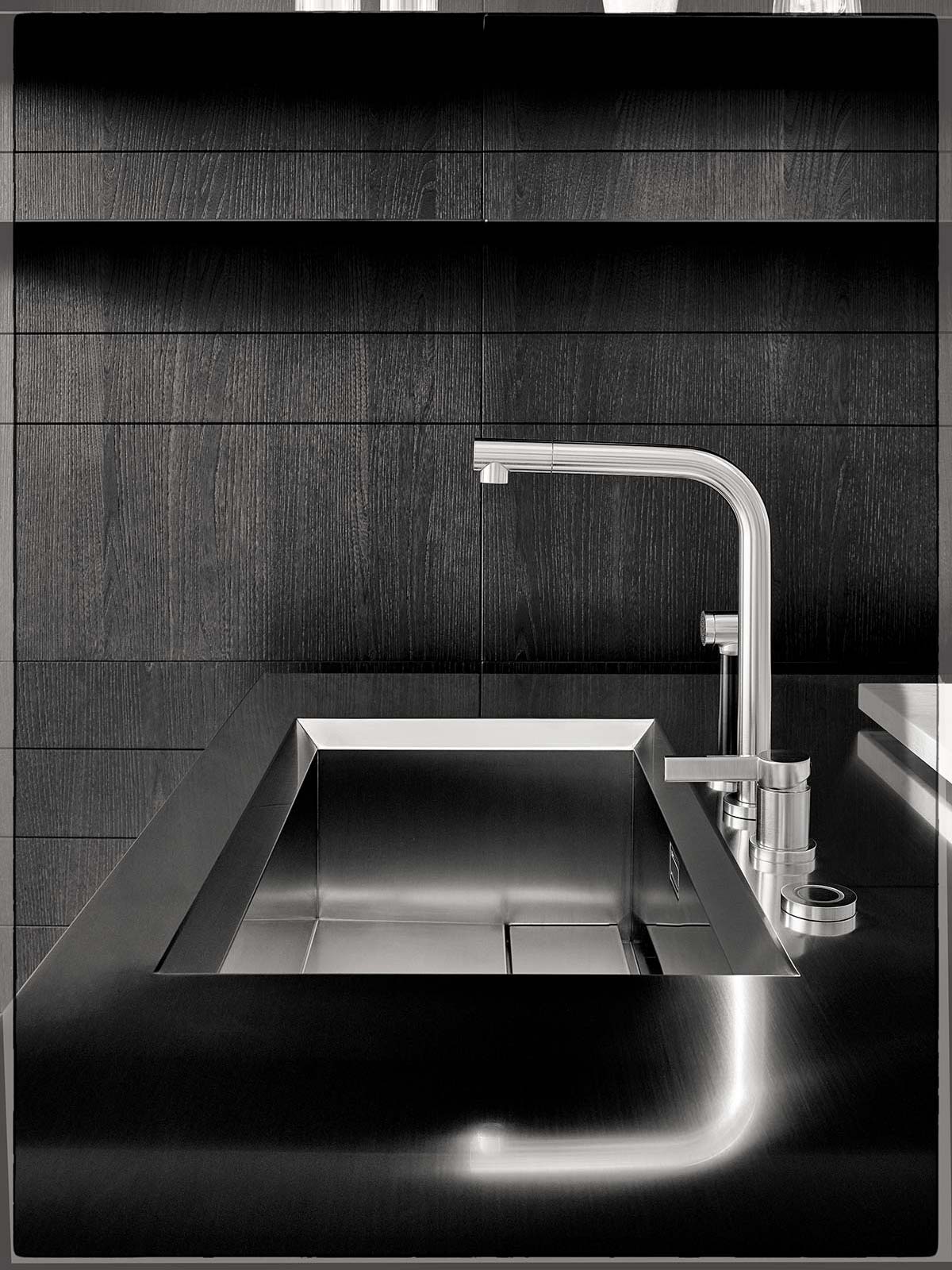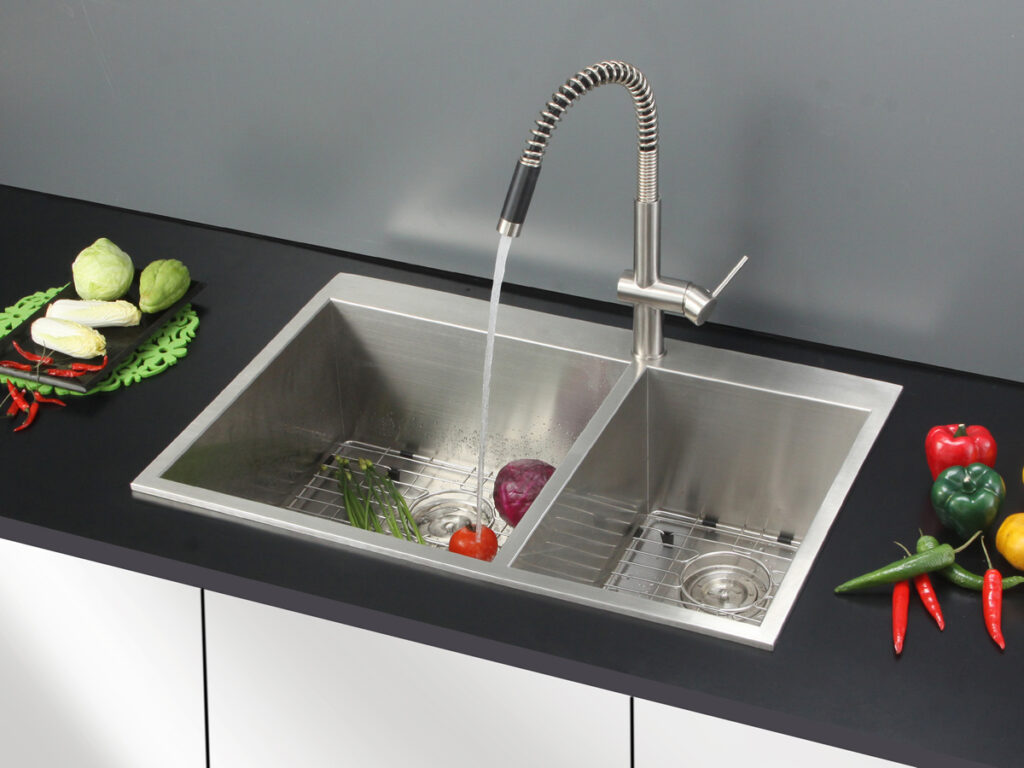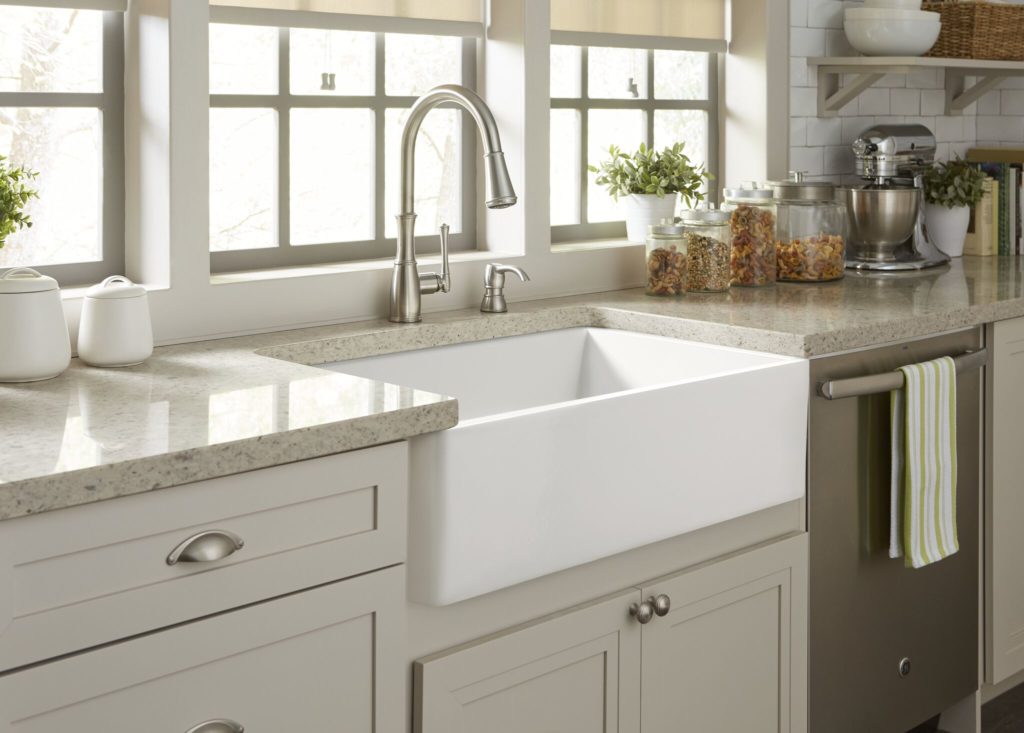The invention of the kitchen sink can be traced back to ancient civilizations, where people used large stones or bowls to wash and clean their dishes. However, the first recorded use of a dedicated sink for washing dishes dates back to the 17th century in Europe. These early sinks were typically made of stone or marble and were designed to be separate from the cooking area.1. Invention of the Kitchen Sink
As time passed, the design and functionality of kitchen sinks evolved. In the 19th century, porcelain sinks became popular due to their durability and easy maintenance. These sinks were also designed to have a separate drainboard, making it easier to dry dishes after washing them.2. Evolution of the Kitchen Sink
Throughout history, a variety of materials have been used to make kitchen sinks. In addition to stone and porcelain, sinks were also made from copper, zinc, and even gold. However, the introduction of stainless steel in the early 20th century revolutionized the kitchen sink industry.3. Materials Used in Kitchen Sink History
Ancient kitchen sinks were typically made of stone or clay and were often located outside of the main living quarters. These sinks were used for a variety of tasks, from washing dishes to preparing food. In some cases, they were also used for bathing and laundry purposes.4. Ancient Kitchen Sinks
The industrial revolution brought about significant changes in the kitchen sink industry. With the invention of new manufacturing techniques and the availability of mass-produced materials, kitchen sinks became more affordable and accessible to the average household.5. Industrial Revolution and the Kitchen Sink
In the early 20th century, stainless steel became the material of choice for kitchen sinks. Its durability, resistance to corrosion, and easy maintenance made it the perfect choice for busy kitchens. Stainless steel also allowed for more creative and modern designs, leading to the popularity of undermount and farmhouse sinks.6. The Rise of Stainless Steel Sinks
Today, kitchen sinks come in a variety of designs, materials, and sizes to fit every type of kitchen. From traditional top-mount sinks to sleek and modern undermount sinks, there is a sink for every style and preference. Some popular designs include single bowl, double bowl, and even triple bowl sinks to accommodate different types of cooking and cleaning needs.7. Modern Kitchen Sink Designs
Technology has also played a significant role in the evolution of kitchen sinks. With advancements in materials and manufacturing techniques, sinks are now more durable, hygienic, and easy to clean than ever before. Some modern sinks even come equipped with features like touchless faucets and integrated cutting boards.8. Impact of Technology on Kitchen Sinks
As society becomes more environmentally conscious, the kitchen sink industry has also taken steps to reduce its impact on the environment. Many manufacturers now offer eco-friendly options, such as sinks made from recycled materials or water-saving faucets. Additionally, the popularity of composting and recycling has led to the introduction of sinks with built-in waste disposal systems.9. Environmental Concerns and Kitchen Sinks
The kitchen sink industry is constantly evolving, and the future looks bright for this essential household fixture. With the integration of technology and the increasing demand for sustainable options, we can expect to see even more advanced and eco-friendly kitchen sinks in the years to come. As kitchens continue to be the heart of the home, the kitchen sink will remain an essential part of our daily lives.10. Future of the Kitchen Sink Industry
The Evolution of the Kitchen Sink

The Introduction of Indoor Plumbing
 In the early days, water was brought into homes through wells or nearby streams. This meant that the kitchen sink was often just a simple basin or bucket used for washing dishes. However, with the introduction of indoor plumbing in the late 19th century, the kitchen sink as we know it today began to take shape.
Indoor plumbing
allowed for a constant supply of clean water, making it easier and more convenient to wash dishes. At first, the kitchen sink was typically a standalone unit made of ceramic or soapstone. These sinks were often large and heavy, and it wasn't until the early 20th century that they were made with more practical and durable materials such as cast iron or stainless steel.
In the early days, water was brought into homes through wells or nearby streams. This meant that the kitchen sink was often just a simple basin or bucket used for washing dishes. However, with the introduction of indoor plumbing in the late 19th century, the kitchen sink as we know it today began to take shape.
Indoor plumbing
allowed for a constant supply of clean water, making it easier and more convenient to wash dishes. At first, the kitchen sink was typically a standalone unit made of ceramic or soapstone. These sinks were often large and heavy, and it wasn't until the early 20th century that they were made with more practical and durable materials such as cast iron or stainless steel.
The Rise of Modern Design
 The 1920s saw a shift towards a more modern and streamlined look in house design, and the kitchen sink was no exception.
Stainless steel
became the material of choice for sinks as it was easy to clean and highly resistant to stains and corrosion. This was also the time when double-basin sinks were introduced, allowing for more efficient dishwashing and food preparation.
In the 1950s, with the rise of the
American Dream
and the emphasis on modernity and convenience, the kitchen sink became a focal point in the home. It was no longer just a place for washing dishes, but also a statement piece that showcased the homeowner's style and taste. This led to the introduction of colorful sinks made of porcelain or enamel, adding a pop of color to the otherwise neutral kitchen.
The 1920s saw a shift towards a more modern and streamlined look in house design, and the kitchen sink was no exception.
Stainless steel
became the material of choice for sinks as it was easy to clean and highly resistant to stains and corrosion. This was also the time when double-basin sinks were introduced, allowing for more efficient dishwashing and food preparation.
In the 1950s, with the rise of the
American Dream
and the emphasis on modernity and convenience, the kitchen sink became a focal point in the home. It was no longer just a place for washing dishes, but also a statement piece that showcased the homeowner's style and taste. This led to the introduction of colorful sinks made of porcelain or enamel, adding a pop of color to the otherwise neutral kitchen.
The Kitchen Sink Today
 Today, the kitchen sink continues to evolve and adapt to the ever-changing needs and preferences of homeowners. We now see a variety of materials such as
granite, quartz, and copper
being used to create stylish and functional sinks. The addition of features such as pull-out faucets and built-in soap dispensers has made kitchen sinks even more convenient and user-friendly.
Moreover, the kitchen sink has become an important element in
green design
, with the introduction of eco-friendly options such as water-saving faucets and sinks made from recycled materials. These innovative designs not only help conserve resources but also add an element of sustainability to the kitchen.
In conclusion, the history of the kitchen sink is a reflection of our ever-changing lifestyles and design preferences. From a simple basin used for washing dishes to a statement piece in modern kitchens, the kitchen sink has come a long way. With advancements in technology and an increasing focus on sustainability, it's safe to say that the kitchen sink will continue to evolve and remain an essential part of any home.
Today, the kitchen sink continues to evolve and adapt to the ever-changing needs and preferences of homeowners. We now see a variety of materials such as
granite, quartz, and copper
being used to create stylish and functional sinks. The addition of features such as pull-out faucets and built-in soap dispensers has made kitchen sinks even more convenient and user-friendly.
Moreover, the kitchen sink has become an important element in
green design
, with the introduction of eco-friendly options such as water-saving faucets and sinks made from recycled materials. These innovative designs not only help conserve resources but also add an element of sustainability to the kitchen.
In conclusion, the history of the kitchen sink is a reflection of our ever-changing lifestyles and design preferences. From a simple basin used for washing dishes to a statement piece in modern kitchens, the kitchen sink has come a long way. With advancements in technology and an increasing focus on sustainability, it's safe to say that the kitchen sink will continue to evolve and remain an essential part of any home.







































































:strip_icc()/dark-granite-kitchen-sink-f66e0d9a-5d00cf11c8d9470d81a47e5bf49b43bb.jpg)










































